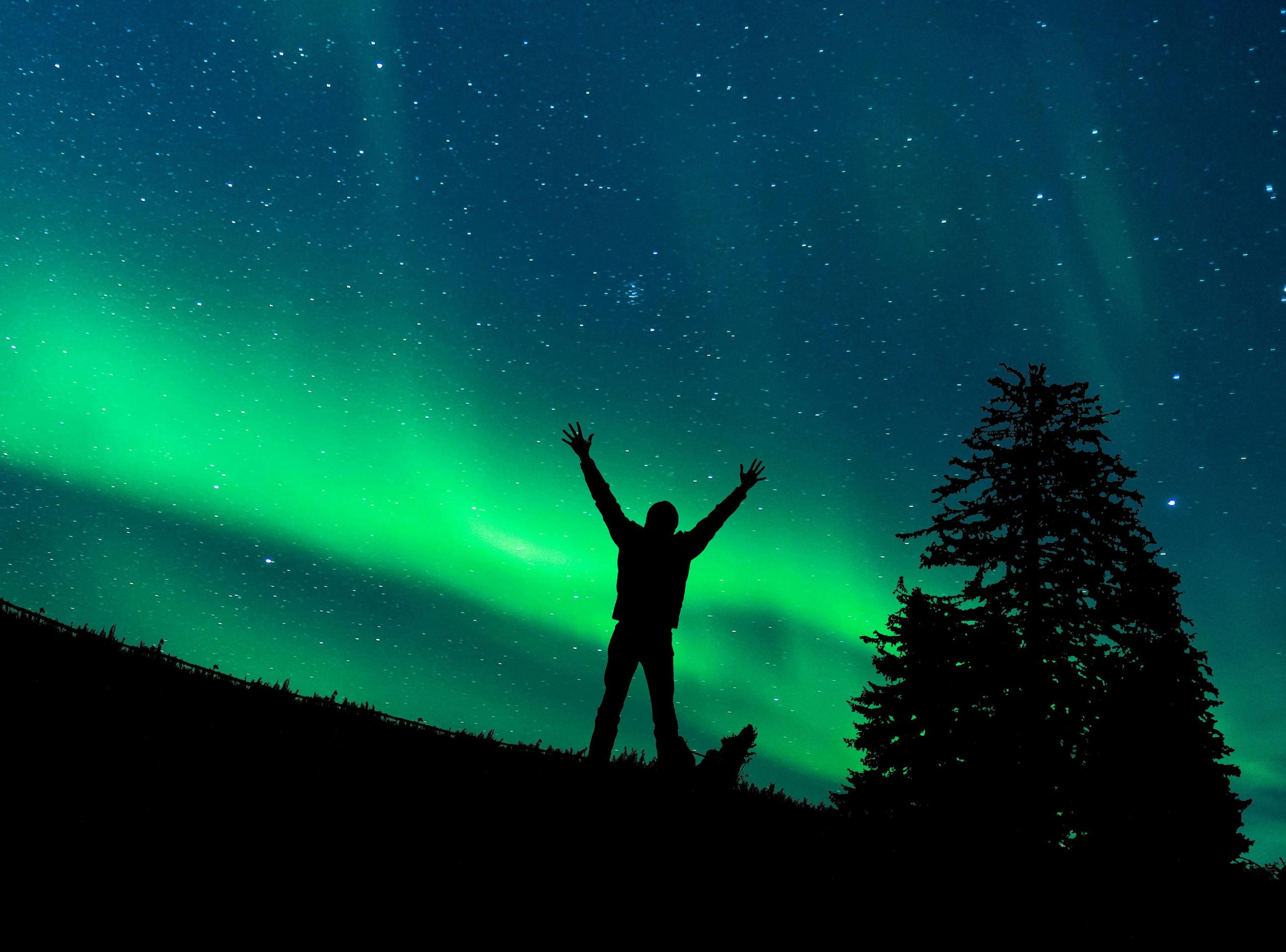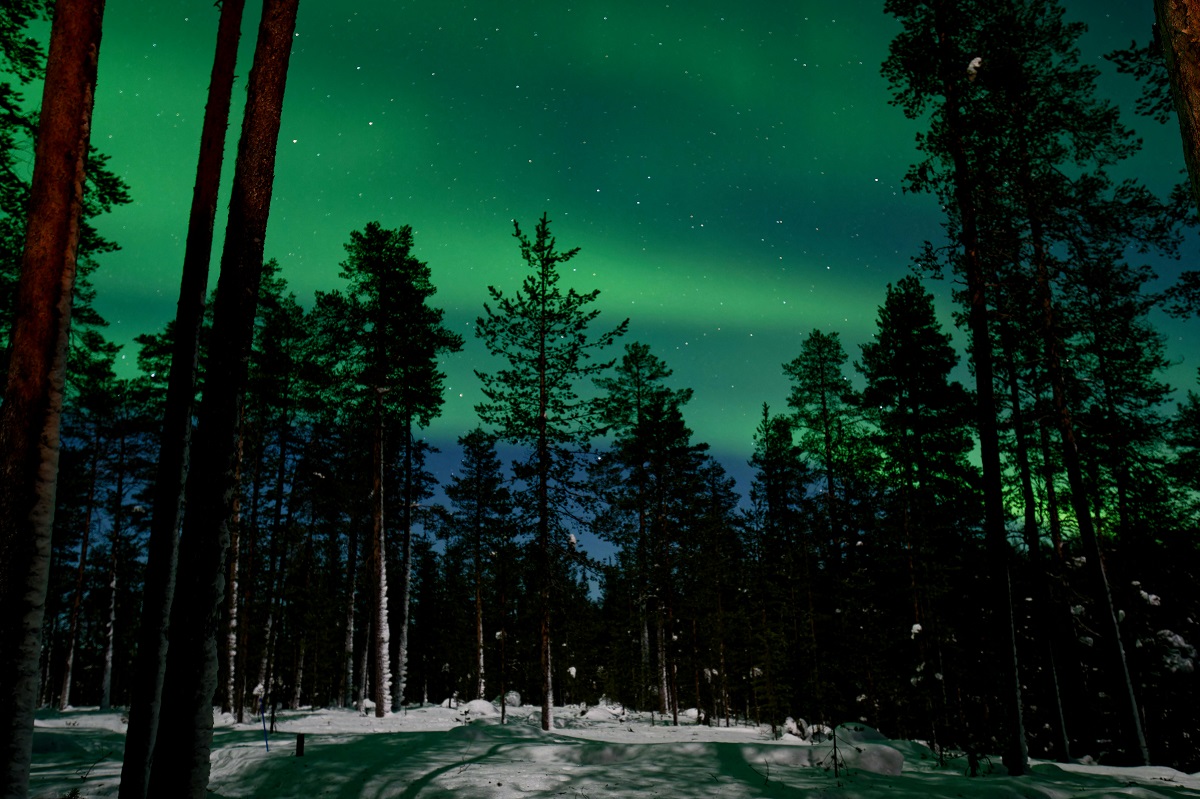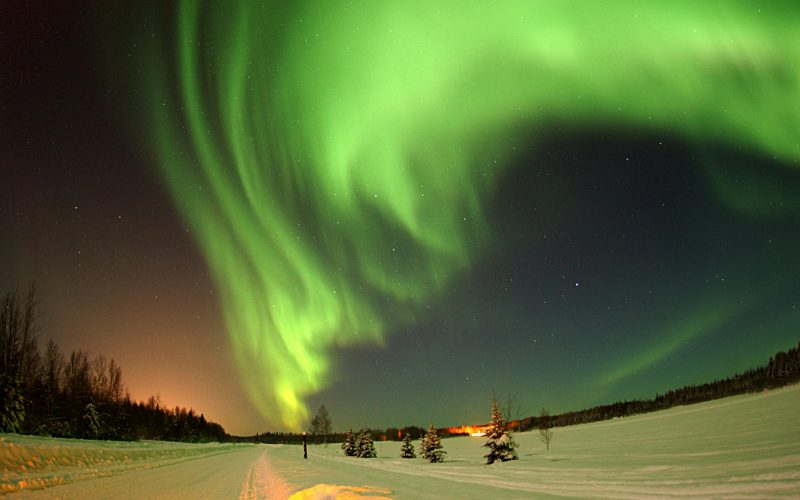
If you’ve ever dreamed of watching the sky come alive with ribbons of green, purple, and pink, Alaska should be at the top of your list. The Northern Lights—also known as the aurora borealis—are one of the most awe-inspiring natural phenomena in the world, and Alaska offers some of the best seats in the house.
But timing is everything. If you’re wondering about the best time to go to Alaska to see the Northern Lights, you’re not alone. While the auroras are technically active year-round, visibility depends on darkness, weather conditions, and solar activity.
In this guide, we’ll break down the best months, where to go, and what else you need to know for an unforgettable aurora experience in Alaska.
When Is the Best Time to Go to Alaska to See the Northern Lights?

Short Answer: From late August to mid-April, when the skies are dark enough for aurora viewing.
Best Months: September through March offer peak conditions, with March often being the most reliable.
Why? During these months, the combination of longer nights, clearer skies, and higher auroral activity create the perfect conditions for light shows.
Why You Can’t See the Northern Lights in Summer
Many people are surprised to learn that summer isn’t ideal for aurora viewing. Here’s why:
- Midnight Sun: From late May to late July, much of Alaska experiences nearly 24 hours of daylight. Even if the auroras are active, the sky is too bright to see them.
- Short Nights: Even in early spring or late summer, nightfall comes late and doesn’t last long enough for consistent viewing.
So if you’re planning a trip primarily to catch the lights, avoid June through early August.
Month-by-Month Breakdown: What to Expect
Late August to September
- Pros: Nights begin to lengthen; early fall colors add scenic beauty.
- Cons: Cloudy skies can be frequent.
- Best For: Travelers who want to combine aurora viewing with mild hiking weather.
October to November
- Pros: Increased aurora activity, cooler weather without extreme cold.
- Cons: Days grow shorter, and snow begins to fall in many areas.
- Best For: Early winter travelers who want quieter experiences and better chances of clear skies.
December to February
- Pros: Longest nights of the year and excellent aurora visibility.
- Cons: Extremely cold temperatures, especially in interior regions like Fairbanks.
- Best For: Dedicated aurora chasers willing to brave the cold for maximum visibility.
March to Mid-April
- Pros: Historically high solar activity, more daylight for exploring, and still-dark nights.
- Cons: Slightly less darkness than deep winter months.
- Best For: Photographers and those who want a balance of winter fun and aurora viewing.
What Time of Night Is Best to Spot the Northern Lights?
The aurora can appear any time after nightfall, but it tends to be most active between 10 PM and 2 AM. In some cases, strong geomagnetic storms can cause lights to show as early as 7 PM or as late as 5 AM.
For the best chance:
- Plan to stay up late.
- Check the aurora forecast daily.
- Choose accommodations with easy access to the outdoors or wake-up call services.
Where in Alaska Should You Go?

You can spot the Northern Lights in many parts of Alaska, but some places are better than others due to their weather patterns, light pollution levels, and proximity to the auroral oval.
Top Locations:
- Fairbanks: Often called the “Aurora Capital of Alaska,” Fairbanks offers some of the most consistent viewing, especially from late August through April.
- Coldfoot & Wiseman (Brooks Range): Remote locations with minimal light pollution—great for serious aurora hunters.
- Denali National Park: One of the best places to visit in Alaska, Denali National Park offers stunning scenery and dark skies. However, the weather can be unpredictable.
- Anchorage: More urban, but on clear nights, the lights are still visible, especially to the north and east of the city.
- Talkeetna and Girdwood: Accessible, scenic, and far enough from major city lights for decent visibility.
What Conditions Improve Your Odds?
Even if you go during the best time of year, a few other factors influence your odds of seeing the Northern Lights:
1. Clear Skies
- Cloud cover can completely obscure the aurora.
- Winter months often have more stable, clear nights in interior Alaska.
2. High Auroral Activity
- This depends on solar flares and geomagnetic storms.
- Use apps or websites like the NOAA Space Weather Prediction Center or Aurora Alerts to track activity.
3. Minimal Light Pollution
- The darker your surroundings, the more vibrant the aurora will appear.
- Avoid city lights and seek out remote lodges or dark-sky parks.
Tips for First-Time Aurora Chasers
- Book a few nights: Don’t rely on just one night; weather changes quickly in Alaska.
- Rent an RV for flexibility: An RV lets you move to clearer skies, stay warm while waiting, and avoid pricey hotel stays in remote areas.
- Stay up late or wake up early: Peak aurora activity often happens in the middle of the night.
- Dress for the cold: Even in September, temps can drop below freezing at night.
- Use a tripod for photos: Long exposure is essential for capturing the lights.
- Check moon phases: A full moon can wash out faint auroras. Try to travel during a new moon.
Is It Worth Joining a Guided Tour?
Yes—especially if it’s your first time. Here’s why guided tours are a good idea:
- Local knowledge: Guides know the best locations with clear skies and minimal light pollution.
- Transportation: Some aurora viewing areas are far from city centers or require 4WD.
- Photography help: Many tours provide photo tips or even take pictures for you.
Some tours even offer heated yurts, glass igloos, or lodges where you can watch the lights in comfort.
The Bottom Line: Timing Is Key for an Unforgettable Experience
If you want to witness the magic of the Northern Lights in all their glory, the best time to go to Alaska to see the Northern Lights is between late August and mid-April—with peak months being September through March. Each part of the aurora season has its pros and cons, but with some planning, flexibility, and a bit of luck, you’ll be rewarded with a celestial show you’ll never forget.
Remember, it’s not just about seeing the lights—it’s about the adventure of chasing them in one of the most beautiful places on Earth.
